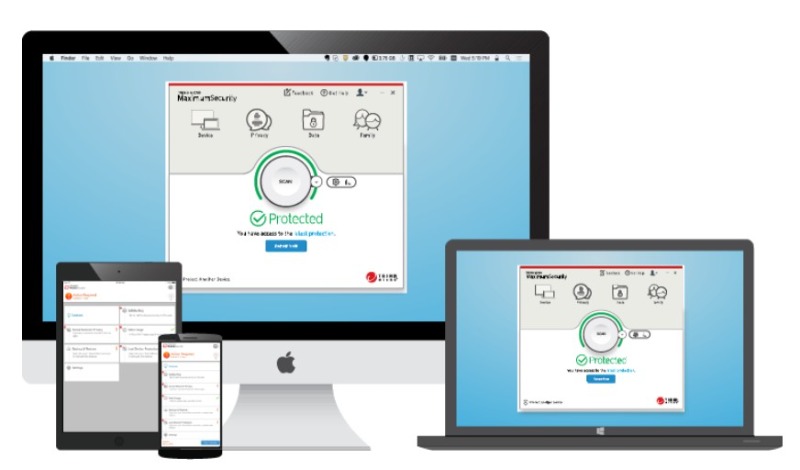Sponsored by Rippling
What is hardware inventory management?
On the benefits of inventory management

Organizations have many IT hardware assets that need effective management, from laptops to servers, smartphones, printers, scanners, routers, and many more.
Firstly, businesses need to keep an accurate inventory of each asset, including its manufacturer, model, serial number, location, and the employee to whom it’s assigned.
They also need to monitor maintenance schedules and connect these hardware assets to corporate IT management systems. Then, it’s mandatory to monitor these devices throughout their lifecycle, from acquisition to issuance to final retirement. Hardware inventory management deals with these essential activities.
Hardware inventory management entails keeping accurate records about hardware assets throughout their lifecycle and monitoring these assets to ensure security and effective usage.
It’s essential for businesses, especially large ones that have numerous hardware assets. This guide dives into the key aspects of hardware inventory management, its benefits, and other crucial information to know about it.
The free trial gives you hands-on access to all the key features under one roof - device management, security, app provisioning, user permissions, and more. Through the trial, you’ll see how it all integrates with your current workflows and policies. So, if you’re an IT manager, founder, office admin - anyone tasked with keeping the digital side of your business running smoothly start your zero-risk trial that will upgrade your management infrastructure.
What is IT hardware inventory?
If you manage IT operations for a business, an IT hardware inventory is a comprehensive list of all hardware assets owned by the business. It indicates every piece of hardware your company owns, such as laptops, routers, switches, storage devices, desktops, keyboards, and mice.
An inventory isn’t merely a list, but includes essential details about each hardware, including their age, maintenance status, location, and current user. It also contains unique manufacturer-issued information for each hardware, including their serial number, warranty information, barcode, and license key.
With the above information entered into an inventory, it becomes easy for IT administrators to keep track of every hardware asset’s health, issue automatic updates, and lock down a device if necessary for security purposes. Hardware inventory management software tools make these tasks as easy as possible.
How to manage IT hardware
Hardware management requires delicate steps and a disciplined approach. These include:
1. Keeping a detailed inventory
Effective management starts with logging information about each hardware asset into your inventory management platform. These purpose-built platforms have pre-set fields for hardware details, and you can simply create a new entry for each asset and fill out the details.
After filling out the details, you can always return to scroll through the entries or search for specific hardware in the inventory database. Inventory management platforms simplify the process of storing and retrieving hardware information.
2. Frequent maintenance and updates
Hardware assets need frequent maintenance and updates to stay in good condition. For example, manufacturers frequently issue updates that enhance performance and security, and installing these updates helps extend your hardware’s lifespan.
One advantage of hardware inventory management platforms is that they enable IT administrators to issue over-the-air updates. That is, you can deploy updates remotely on hardware assets, and they’ll be installed regardless of the user’s location. Remote updates are convenient because they eliminate the need to physically interact with hardware to keep it in good shape.
3. Integration with corporate software tools
Every organization or internal team uses specific software tools to run its operations. For example, all corporate devices may use a specific antivirus tool, such as Trend Micro, and all laptops issued to the customer support team can use specific help desk software, such as Freshdesk.
As an IT administrator, it’s your responsibility to integrate devices with the appropriate software that lets employees perform their jobs. The good thing is that you can manage integrations remotely, although initial setup may require physically interacting with the hardware asset.

4. Reporting
You should be able to create detailed reports about hardware assets throughout their lifecycle. These reports can be presented to management teams and other stakeholders, for example, when an IT head pitches to the management team about the need to upgrade hardware assets.
Reports can include extensive information about hardware assets, including their age, operating system version, last update, memory capacity, and processor. Thanks to inventory management software, you can generate these reports automatically based on information that’s already stored in the software.
5. Security protocols
With cyber attacks growing rapidly, especially against businesses, protecting hardware assets is non-negotiable. IT administrators need to implement robust security protocols to protect corporate devices from breaches.
For example, IT administrators can deploy cybersecurity software that monitors every hardware asset for suspicious activities, such as login attempts at unusual times. When suspicious activity is detected, the IT team will be automatically alerted to take further action.
IT teams can also implement two-factor authentication, which adds an extra layer of security for any employee using a corporate device to log into an internal software tool. Instead of just providing their username and password, they’ll also need a unique one-time PIN generated on an authenticator app. Two-factor authentication prevents 99.9% of unauthorized account access attempts.
Earlier on, we also mentioned the ability to remotely deploy security updates issued by device manufacturers. These tenets go a long way in keeping devices secure during their lifecycle.
6. End-of-life planning
Every hardware asset entered into your inventory system has an end-of-life period. Internal hardware components can get worn out, and performance can lag, necessitating a replacement. Even when a hardware maintains its performance, it can become outdated compared to what’s currently in vogue, warranting a replacement.
IT administrators should have firm plans for disposing of old devices and replacing them with new ones.
To start, data should be wiped clean off any old hardware asset before it’s disposed of. You can do this by wiping the hard drive via software or destroying it physically.
After deleting data from devices, they can be sent to resellers or vendors that extract spare parts from old hardware. You can also send hardware to recycling centers that can safely dismantle it and recover usable materials.
Benefits of hardware inventory management
Cost reduction is the main benefit of hardware inventory management. By managing hardware assets effectively, you'll reduce the rate of corrective maintenance, rather than preventive, and minimize faults that cost significant money to repair.
Software tools make it easy to manage hardware assets, automating processes that otherwise would have been done manually.
An investment in the right inventory management software generates significant returns by maximizing the value of hardware assets, reducing the frequency of repairs and replacements, and enhancing digital security.
Sign up to the TechRadar Pro newsletter to get all the top news, opinion, features and guidance your business needs to succeed!
Stefan has always been a lover of tech. He graduated with an MSc in geological engineering but soon discovered he had a knack for writing instead. So he decided to combine his newfound and life-long passions to become a technology writer. As a freelance content writer, Stefan can break down complex technological topics, making them easily digestible for the lay audience.

